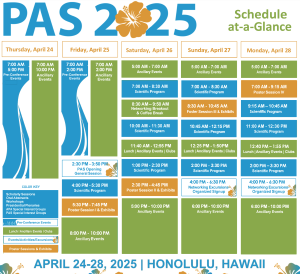Cardiology
Clinical Research
General Pediatrics
Neonatology
Pulmonology
Trainee
Together we stand, divided we fall – the impact of prematurity on cardiovascular and pulmonary health
-
KL
Krithika Lingappan, MD MS PhD (she/her/hers)
Associate Professor
Childrens Hospital of Philadelphia
Baylor College of Medicine
Philadelphia, Pennsylvania, United States -

Shazia Bhombal, MD
Associate Professor
Children’s Healthcare of Atlanta/Emory University
Atlanta, Georgia, United States -

Roopa Siddaiah, MD
Associate professor of Pediatrics
Penn State Children's Hospital
Hershey, Pennsylvania, United States -

Steve Abman, MD (he/him/his)
Professor
University of Colorado School of Medicine
Denver, Colorado, United States
Chair(s)
Preterm infants are born with underdeveloped lungs that are not fully equipped for efficient gas exchange. The lifesaving ventilatory support further stress their immature pulmonary microvasculature and hinder alveolar development, leading to inflammation, vascular remodeling and onset of bronchopulmonary dysplasia (BPD and associated pulmonary hypertension (BPD-PH). This issue is more severe in infants with intrauterine growth restriction (IUGR) where disrupted angiogenesis results in a sparse pulmonary microvasculature and maladaptive fetal pulmonary vessels that become thick and stiff. This can further exacerbate right ventricular dysfunction, worsening pulmonary blood flow and gas exchange.
Cardiorespiratory mechanics are further complicated by other co-morbidities associated with prematurity such as elevated systemic afterload due to abnormal renin-angiotensin regulation. Additionally, left ventricular diastolic dysfunction characterized by impaired relaxation and increased stiffness, can cause pulmonary congestion due to back pressure leading to post-capillary or pulmonary venous hypertension.
Positive pressure ventilation also impacts cardiac function. Insufficient ventilation can increase pulmonary vascular resistance (PVR) and compromises pulmonary blood flow, while excessive positive pressure could negatively affect both pulmonary and systemic venous return, altering cardiac output and function. Achieving an optimal Positive End-Expiratory Pressure (PEEP) is essential for recruiting lung function and improving oxygenation while lowering PVR without adversely affecting cardiac hemodynamics. Understanding early cardiopulmonary interaction is crucial for grasping the cardiovascular challenges and potential long-term health impacts these infants may face as they grow into adults.
Learning Objectives:
- Understand the pulmonary vascular, right heart, and left heart dysfunction associated with premature birth
- Evaluate the impact of ventilation on hemodynamics in the setting of BPD-PH
- Appreciate long-term sequelae of cardiopulmonary dysfunction in preterm-born adults
Presentations:
-
2:00pm - 2:05pm HSTIntroduction
Speaker: Steve Abman, MD (he/him/his) – University of Colorado School of Medicine
-
2:05pm - 2:18pm HSTEffect of Prematurity on Pulmonary Vascular Growth and Impact on the Right Ventricle
Speaker: Kara N. Goss, MD – University of Texas Southwestern Medical School
-
2:18pm - 2:31pm HSTConsequences of Preterm Birth on Left Ventricle and Systemic Circulation
Speaker: Arvind Sehgal, PhD (he/him/his) – MONASH UNIVERSITY
-
2:31pm - 2:44pm HSTTools to Assess Cardiopulmonary Interactions in Preterm Infants
Speaker: Shazia Bhombal, MD – Children’s Healthcare of Atlanta/Emory University
-
2:44pm - 2:57pm HSTReview Ventilatory Strategies to Optimize Hemodynamics in BPD
Speaker: Roopa Siddaiah, MD – Penn State Children's Hospital
-
2:57pm - 3:10pm HSTLong-term Implications of Prematurity on the Cardiovascular System
Speaker: Sarah L. Harris, MBChB, DCH, FRACP, PhD (she/her/hers) – University of Otago Christchurch
-
3:10pm - 3:20pm HSTPanel Discussion
Speaker: Shazia Bhombal, MD – Children’s Healthcare of Atlanta/Emory University
Speaker: Sarah L. Harris, MBChB, DCH, FRACP, PhD (she/her/hers) – University of Otago Christchurch
Speaker: Kara N. Goss, MD – University of Texas Southwestern Medical School
Speaker: Krithika Lingappan, MD MS PhD (she/her/hers) – Childrens Hospital of Philadelphia
Speaker: Arvind Sehgal, PhD (he/him/his) – MONASH UNIVERSITY
Speaker: Roopa Siddaiah, MD – Penn State Children's Hospital
-
3:20pm - 3:30pm HSTQ & A
Speaker: Krithika Lingappan, MD MS PhD (she/her/hers) – Childrens Hospital of Philadelphia

